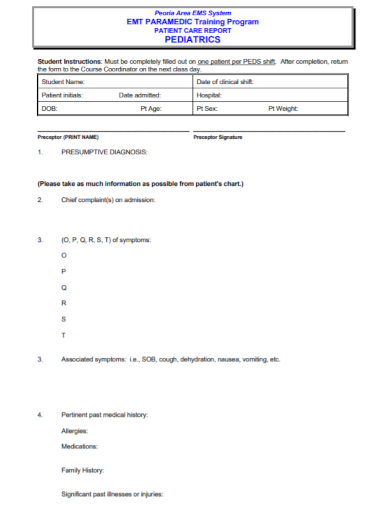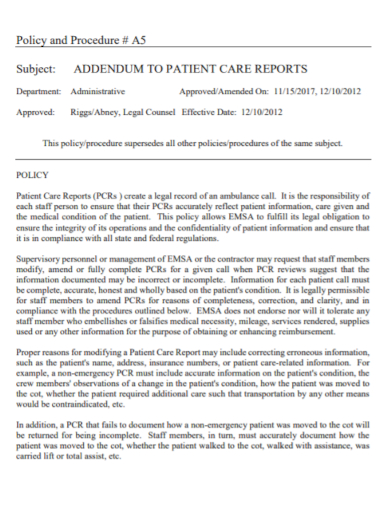

A lot of people believe that only nurses or health care workers can write reports . Most specifically patient care reports or anything that may be related to an incident report that often happens in hospitals or in some health care facilities. It would seem that when you hear the words patient and care with the word report mixed to it, you would immediately think, oh nurses are mostly the ones who write these kinds of reports. EMS or EMTs should not and cannot write these kinds of reports. However, the truth is, anyone can write a report. A patient care report is no different than any kind of report that you may be used to seeing.
The only difference is that, this is more for the medical field than the normal reports that you see that are handled by a different set of authority. But what is a patient care report and why is it so important to know about it? Why do you need to know about it, if it’s only for those EMS or EMTs? Simple, in case you have the opportunity to know what it looks like and how it’s written. For more ideas and ways, I highly recommend you check the definition, tips and examples below.











We often hear of care reports based on by medical teams or by medical authorities. Yet, we are not sure how this differs from the kind of report that is given to us by the same people. So this is the time to make it as clear as possible. A patient care report is a document written by medical professionals to report about the patient’s wellbeing, care and status. This document consists of the result of the assessment and the evaluation of the patient being done by the EMTs or the EMS. This also means that what they may have gotten from the assessment and the evaluation of the overall status of the patient. Since this record is not based inside the hospital, this patient care report is only used once the patient is ready to go and can be discharged altogether. The importance of this kind of report is to update the hospital and the doctor that handled the assessment and evaluation of the patient under their care. With this in mind, any information being given in the report is still crucial.
Where do you even begin when you write a patient care report? A lot of EMS or EMTs do know how to write one since they are trained to do so. But for those who are relatively new to it all, but would want to try it out? What should you write and what should you avoid altogether? The following tips will help you get started on writing a patient care report.
One thing you may take notice of or the first thing that you may take notice of is the specific information. General information on a patient care report will not get you anywhere. In this kind of field, being more specific especially with the diagnosis and the status of the patient is better than just stating the patient is okay. So when you are writing your PCR or patient care report, why don’t you try and be more specific. It makes all the difference.
If your report is mostly like that of a checklist or a fill in the blanks type, remember that correct details are crucial. Incorrect detail can cost someone their life and we are not going to let that happen. So when you are filling out the report, read everything carefully and fill out the details. If you think that you would need help with filling out the report, ask instead of assuming the information.
After you get the call it is always best to write the report then and there. This is for the fact that you would not be able to forget what had been said and given. The memory of the information you received will still be fresh and you would not have any issues with it. This is why a lot of EMTs or EMS recommend you write the report after you get the call.
To make it easier for you to make your PCR or patient care report, visualize it. Visualize how your report is going to be read by the medical team. If you find yourself having difficulty with your report, you would also know that they would feel the same way. This is why you should at least be careful what you write, be careful in adding the information and always be careful with what you may be adding.
Proofreading gives you the opportunity to check. It gives you the opportunity to see if you have written or filled out everything that is asked of you and more. It also gives you the chance to see if your information is specific and concise.
A patient care report is a document made mostly by the EMS or EMTs. This documented report is done after getting the call. This consists of the information necessary for the assessment and evaluation of a patient’s care.
What should be avoided in a patient care report is making up the information that is not true to the patient. This is why you have to be very careful and very meticulous when writing these kinds of reports. Every detail counts.
The person or the people who will be reading the report are mostly medical authorities. When you are going to be passing this kind of report, make sure that you have all the information correctly. One wrong information can cause a lot of issues and problems.
It goes without saying writing reports whether it may be a normal report you are used to or this kind, it takes time and knowledge. It takes time, patience and knowledge of what you are doing to be writing these kinds of reports. One wrong information can cause a patient’s health status to turn complicated. Be careful.